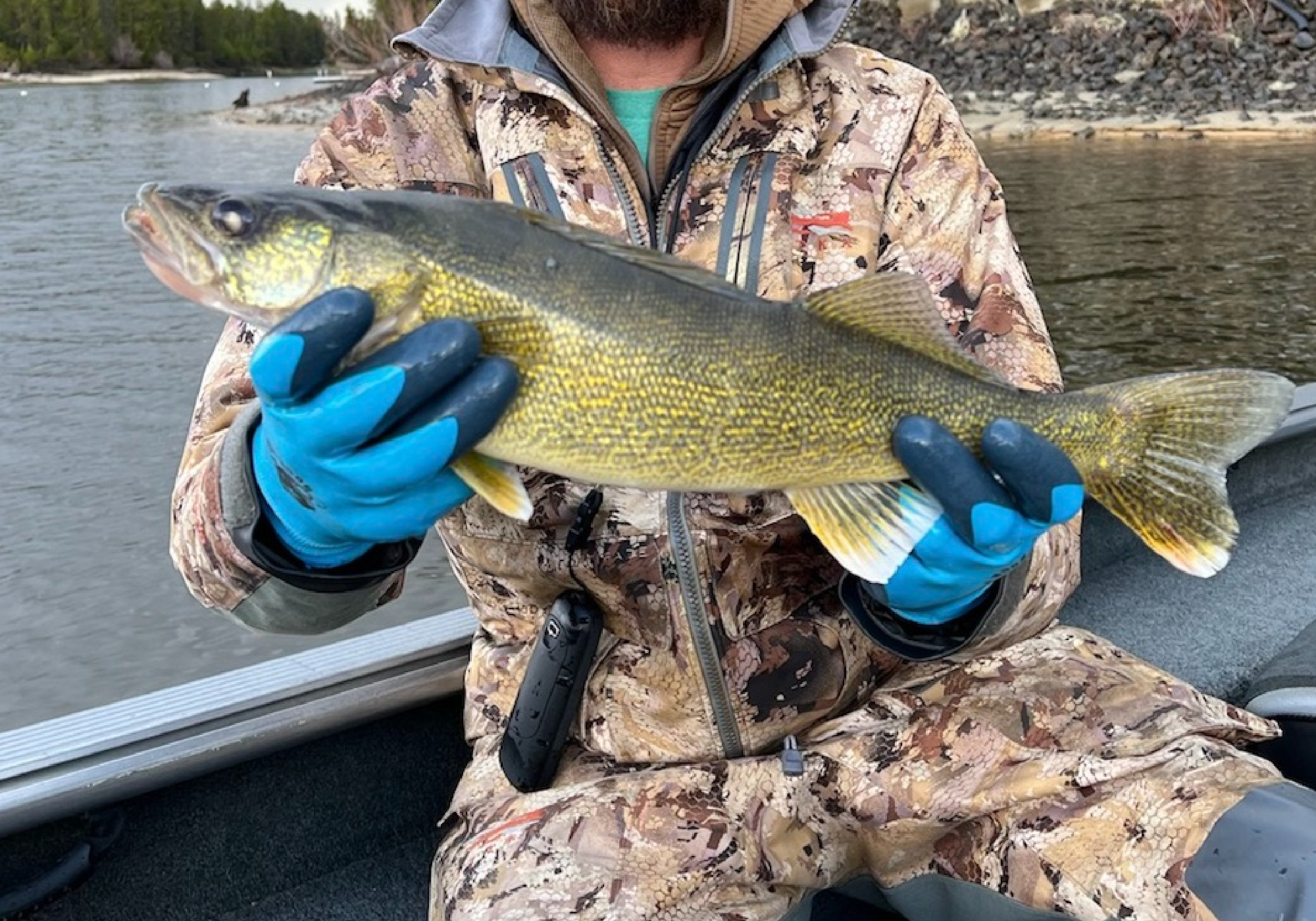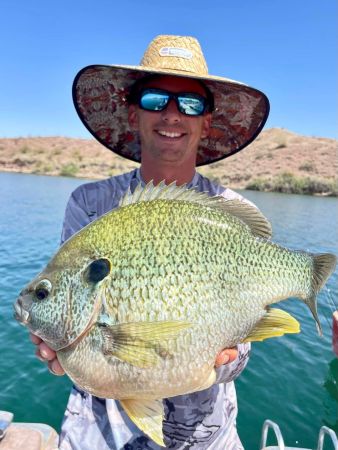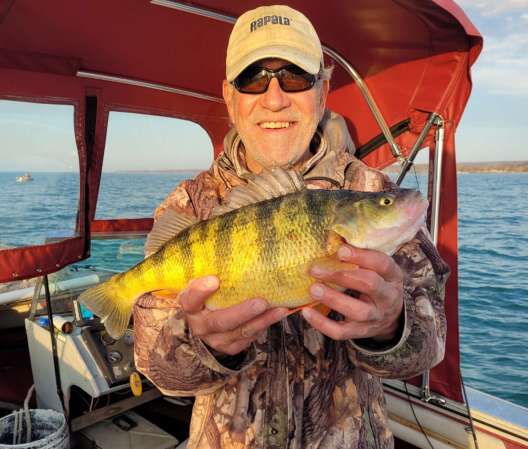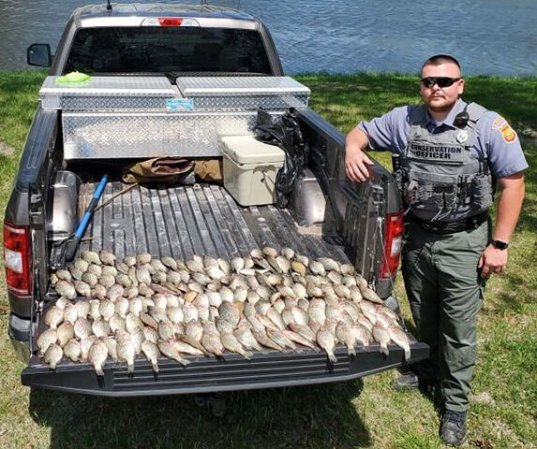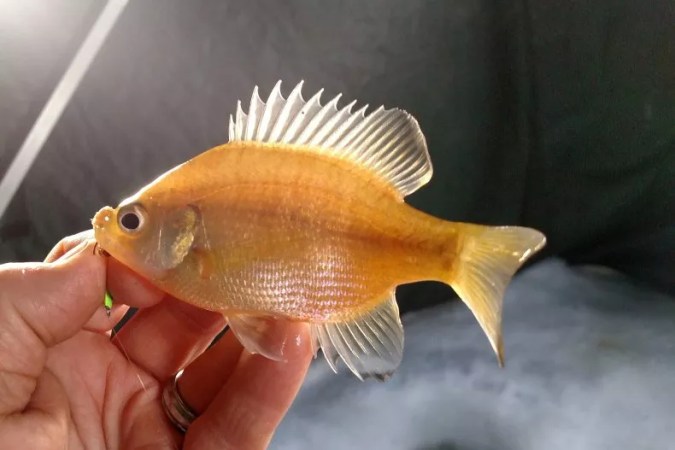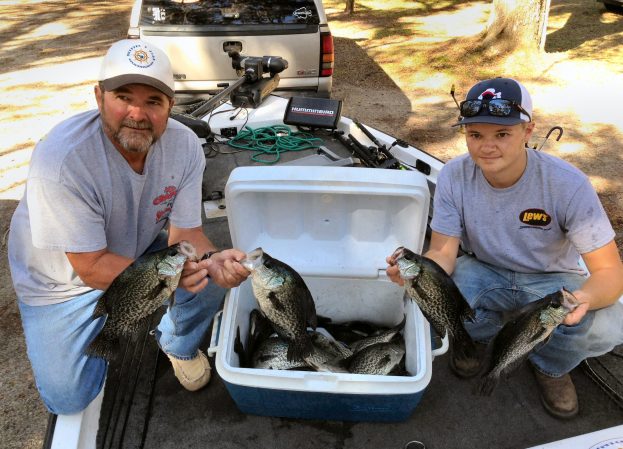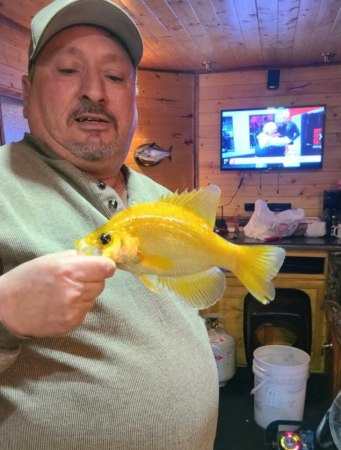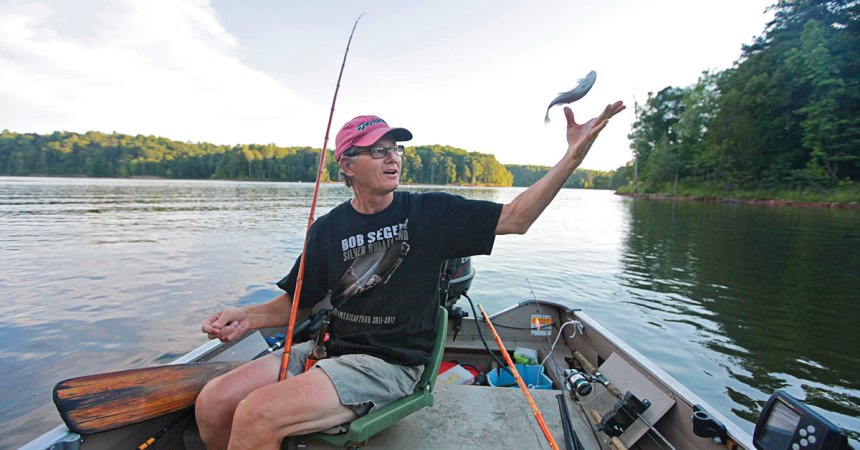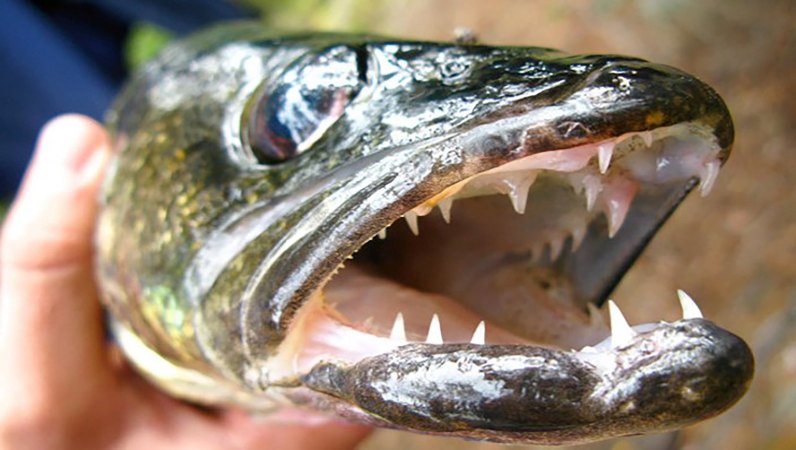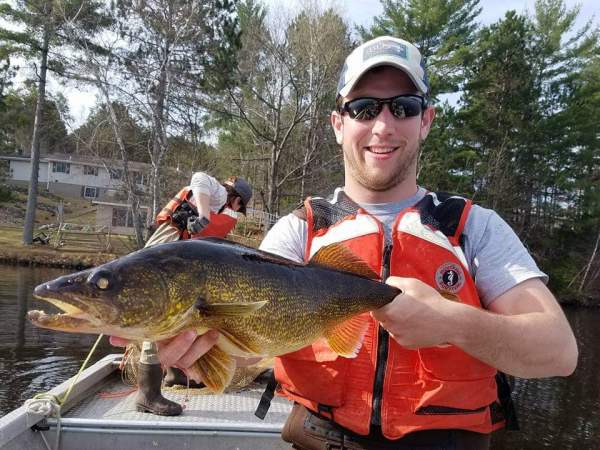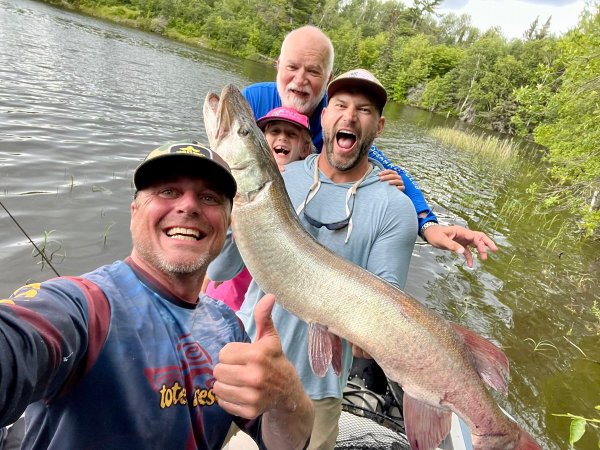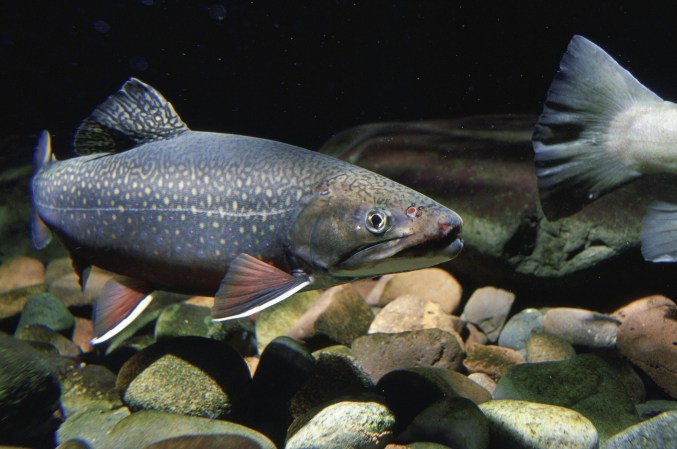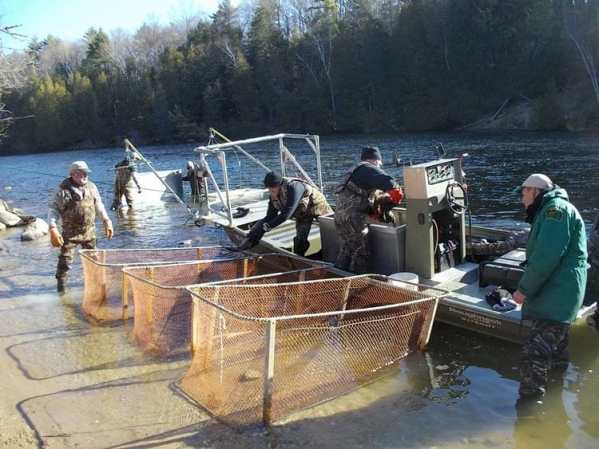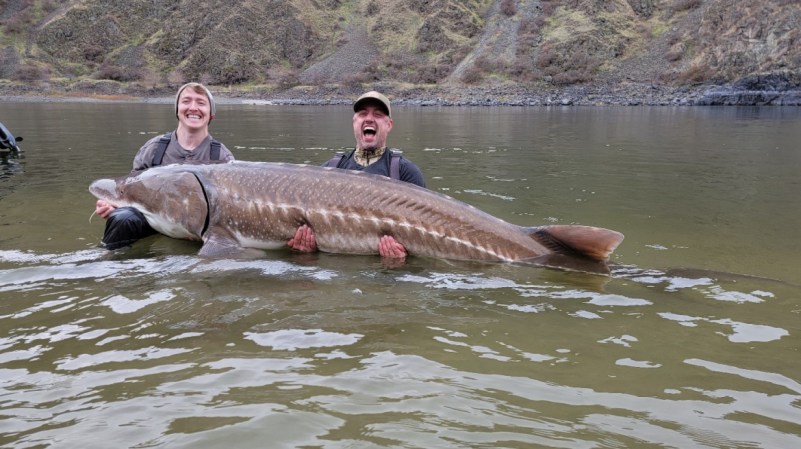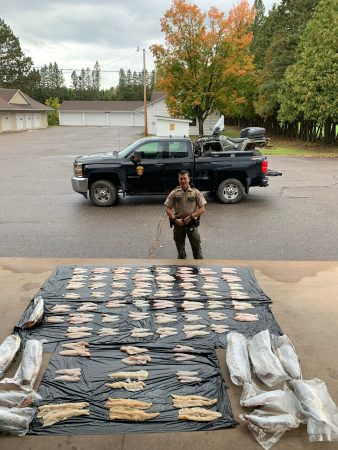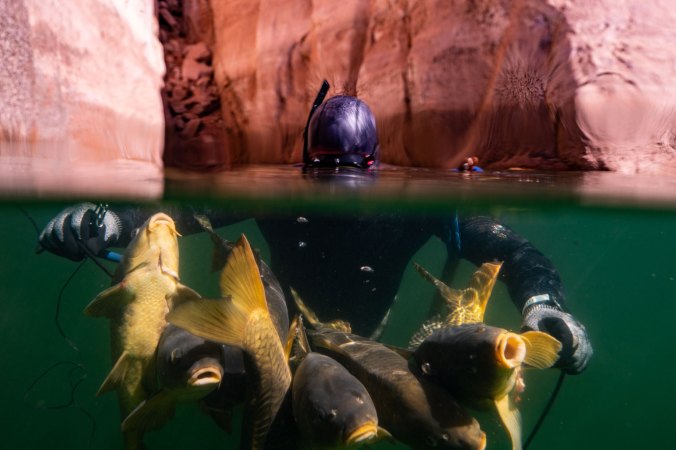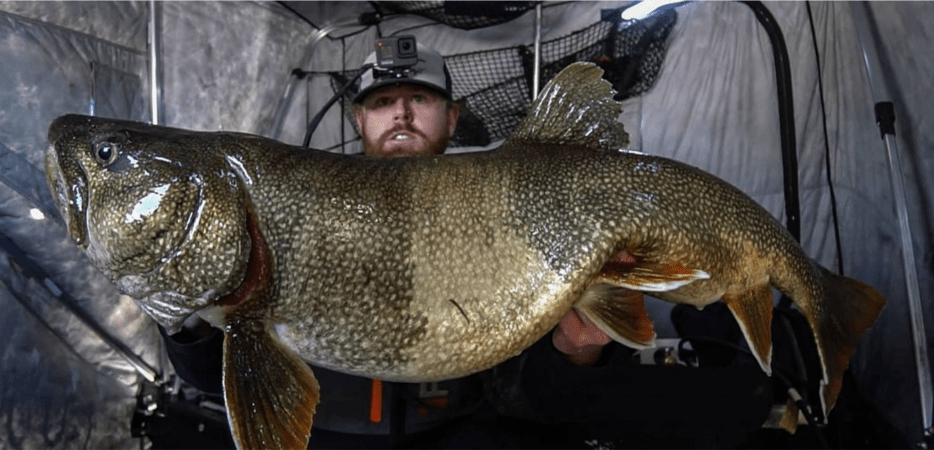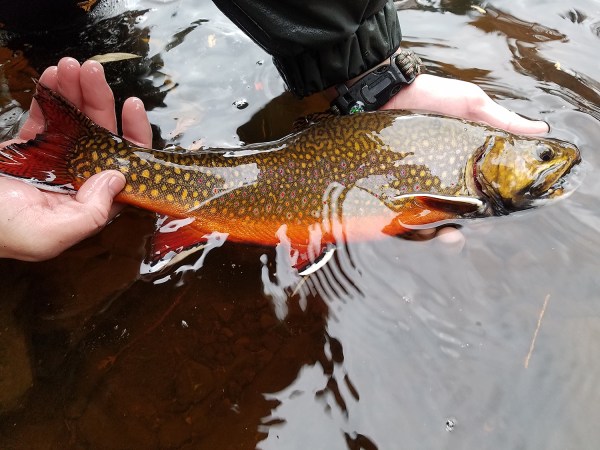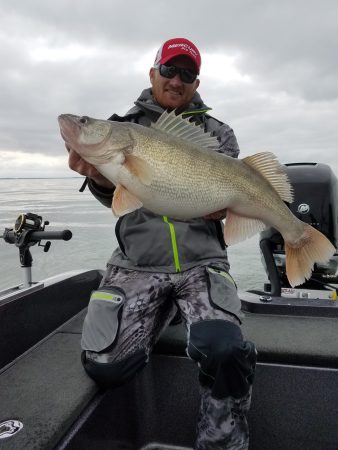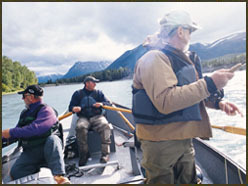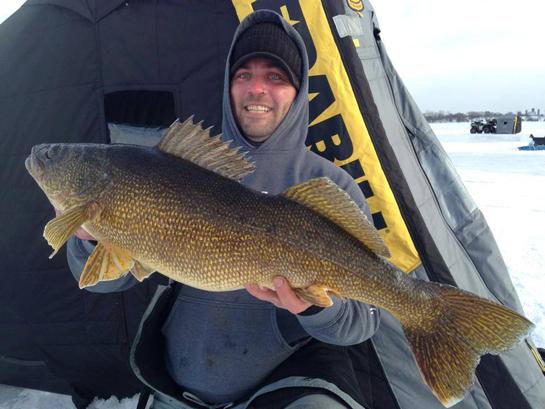While Mike Thomas and Chris Weber were bass and perch fishing on Lake Cascade last May, Thomas thought Weber was messing with him. They were trying to catch fish to transport to a community pond in the nearby town of Cascade, Idaho. As the duo started hauling some bass in, Weber said he had a walleye on the line.
“I asked him, ‘Is that another bass?'” Thomas recalls to Outdoor Life. “He said ‘Man, it feels like a walleye.’ And I was like whatever, I’m used to getting ribbed on. I thought he was joking.”
But if anyone knew what a walleye bite felt like, it was Weber. He used to be a walleye guide in Wisconsin, and moved to Cascade to chase perch on this exact lake. He asked Thomas to grab the net, but Thomas didn’t think that was necessary, since he was convinced the fish was just another bass.
“Then it kind of swirled up near the surface, and he could see that white tip on the fin, and he said ‘It’s a walleye! It’s a walleye!’,” Thomas says. “I reached out with the net to help him land it…as he lifted it up, kind of flipping it, it almost went back in the lake. But the emotions and response to him catching that walleye, I’ll never forget. I was pretty shocked, to say the least.”
This might have been the end of the story if Thomas were just another angler. But he’s not. He’s a regional fisheries biologist for the Idaho Department of Fish and Game, where he makes a living knowing what’s supposed to be in Lake Cascade and what’s not. Walleye fall into the latter category.
Now, nine months after the catch, a team of researchers from the NOAA fisheries department, the University of California Santa Cruz, and the University of California Davis’ Center for Watersheds Sciences has determined that the walleye had only lived in Lake Cascade for about two years before Weber caught it at age four. In other words, it was born somewhere else and brought there.
One Fishy Walleye
After getting the walleye back to a lab, IDFG researchers removed its otolith, or inner ear bone. Fish carry what are known as “chemical signatures” on their otoliths from the waters they live in. The chemical signature on the walleye otolith matched that of three perch from Lake Cascade, but only for the last two years of the walleye’s life. The perch, on the other hand, had the same chemical signature since birth, signaling that they hadn’t lived anywhere else.
“We are excited to use the tools we have developed to track fish movements to help our Fish and Game partners solve the walleye mystery,” UC Santa Cruz researcher Malte Willmes said in an IDFG press release.
“We have never used otolith microchemistry in a forensics case, but it is clear that it is a powerful tool,” research team lead Rachel Johnson added.
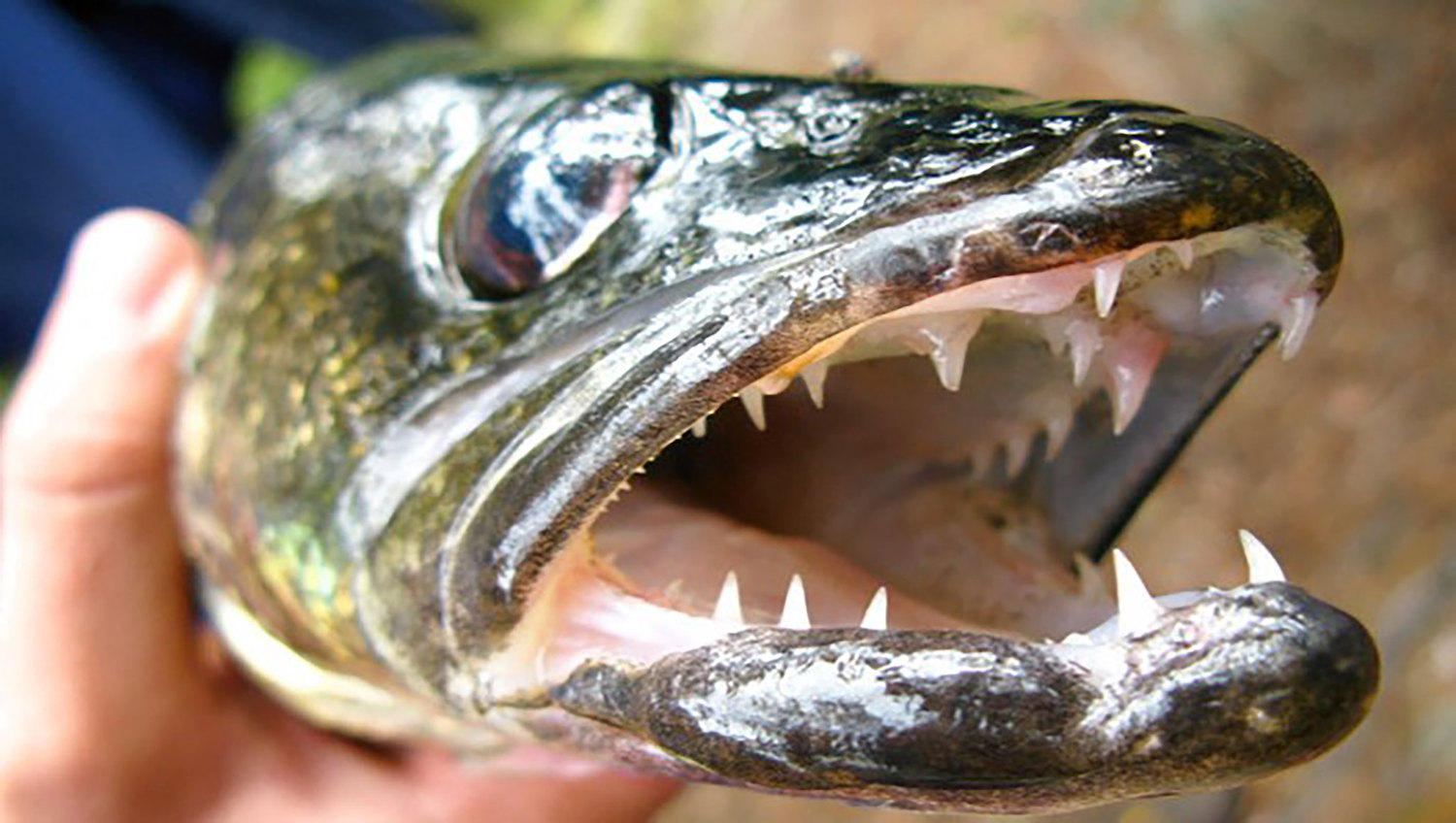
It goes without saying that lake fish don’t tend to jump waterbodies. IDFG has a stocking program, but the state doesn’t put any walleye in Lake Cascade. If a raptor had plucked the walleye out of a different waterbody and flown it here, it wouldn’t have survived.
That leaves one hypothesis for this whodunnit.
“Folks think this waterbody should have this species of fish in it, and Fish and Game won’t do it, so they do it,” McCall regional fisheries manager Jordan Messner tells Outdoor Life. “They go to a lake that has that fish species, catch a few of them, put them in their livewell, then drive the boat with water in the livewell over to where they want those fish, go out fishing in their boat, and just toss them over.”
What Now?
Catching the perp in an illegal stocking case is extremely difficult, IDFG assistant chief of enforcement Joey Ishida explains.
“We don’t locate most of these individuals. When you think about how fast someone could dump a bucket of fish into a body of water and just take off…we’d literally have to have an officer or witness on site to document it all,” Ishida tells Outdoor Life. “And with a large body of water, it’s going to be tough to prove that those fish dumped into that body of water were walleye. It’s a really tough case.”
When reports of the walleye first circulated, Citizens Against Poaching offered a cash reward for information regarding what was assumed to be illegal stocking. But the mystery is still unsolved at this point.
According to Ishida, anyone convicted of misdemeanor illegal stocking faces a fine of up to $1000, up to six months in jail, and a one- to three-year loss of their fishing license. They might also have to pay restitution for remediating any problems caused by the illegal stocking. This can total in the hundreds of thousands of dollars.
Where Perch Reach Old Age
So what’s the big deal if a few walleye ended up in one of Idaho’s biggest lakes?
“If you add a top predator, like pike or walleye, it adds a new dynamic in there and could jeopardize the perch fishery,” Thomas explains. “We’re unsure if they’d be able to reach old age. Without the adequate forage base, we don’t know how walleye would do, either.”
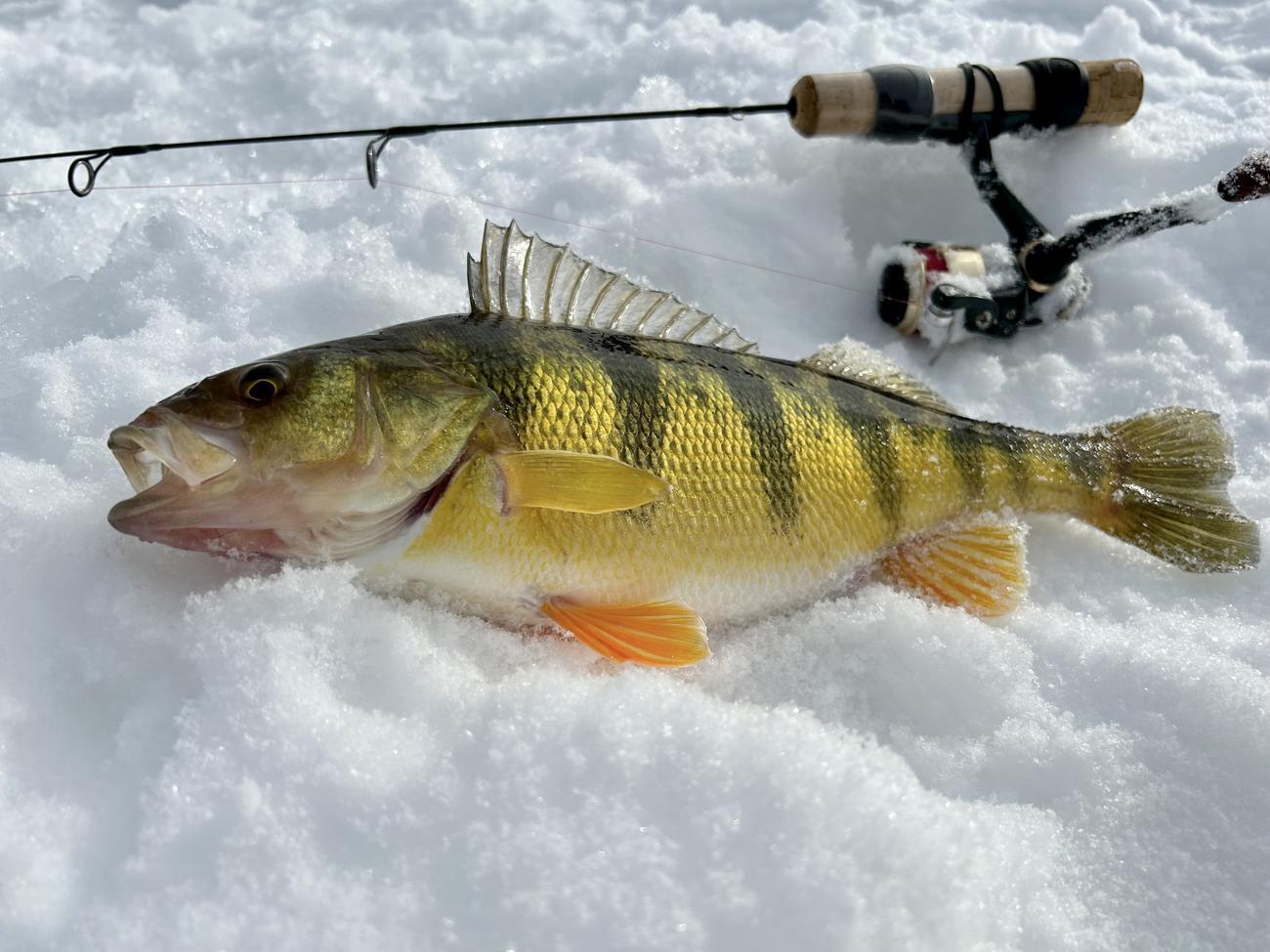
Thomas points out that Lake Cascade doesn’t have a ton of forage fish like ciscoes or minnows. Instead, the ecosystem relies on perch to act as both a forage species and a predator species.
“It’s a pretty simple fish community. There aren’t a lot of other fish species in Cascade,” Thomas says. “What makes the jumbos so unique in Cascade…is that they’re reaching really old ages. We know that our 8- to 9-inch perch are the same age as 8- to 9-inch perch in other lakes in Idaho. But what’s getting them to 15 or 16 inches is a lot of time. Once they reach that 8- or 9-inch mark, they put so much energy into spawning that their growth rate slows. It takes a long time for them to get that big.”
Read Next: The Insane Cult of the Lake Erie Walleye
Ultimately, the discovery that the walleye wasn’t born in Lake Cascade does bring some relief to fisheries managers. Even though it gives the enforcement division a damn-near-cold case to try unfolding, it also suggests that walleye aren’t successfully reproducing in the lake—or, at least, that this particular fish wasn’t the result of that.
“At this point, we have seen nothing to indicate that walleye have successfully established themselves in Lake Cascade,” Messner said in the press release. “[That] is good news.”

